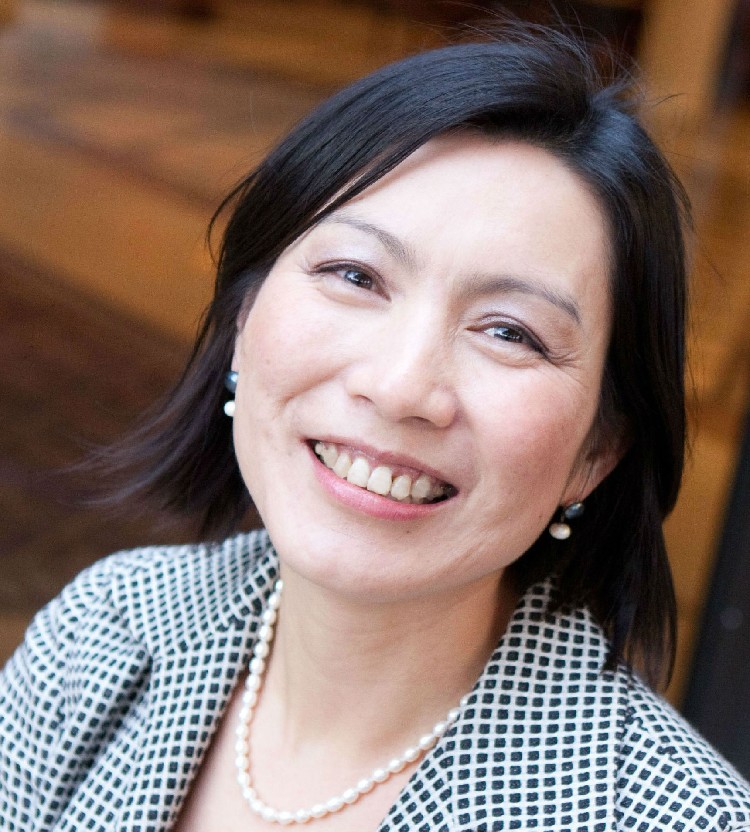The first time Emi Kiyota visited her grandmother in a Japanese nursing home, she was profoundly affected. “I was so uncomfortable,” Kiyota says. “I could see that my grandmother and most of the other patients were just existing there; they had no purpose, they were just waiting for release.”
Her grandmother, who loved to garden, had no flowers or plants around her. The activity program at the facility was regimented, and each person was forced into the same social routine whether they were interested in the activities or not. The staff often called residents by their room numbers, rather than by their names.
That nursing home changed Kiyota’s life. After one particularly upsetting visit with her grandmother, who suffered from dementia, Kiyota quit her job in Tokyo and began looking for a way to help the elderly. “I knew I had to do something for elders” she says. “I just didn’t know what.”
Ibasho
That was 15 years ago. Now, at the age of 41 and armed with multidisciplinary degrees in environment and behavior studies, architecture, and horticulture therapy, Kiyota is a leading environmental gerontologist who runs her own nonprofit consulting firm called Ibasho. The word ibasho means “a place where you can feel like yourself.” It’s a Japanese concept that embodies an atmosphere of home, comfort and family, an atmosphere that many nursing homes lack. Working to correct that problem is Kiyota’s mission. She wants to transform nursing homes from cold, impersonal environments into centers of warmth and individuality. Ibasho correlates to a movement in the United States known as “person-centered care.” Person-centered care focuses on the individual; it accommodates each nursing home resident’s unique needs and personal preferences. It sees the person first, not the diagnosis.
Kiyota advises on the physical aspects of new facility design—the width of doorways and placement of furniture to accommodate wheelchairs are important architectural considerations in any nursing home blueprint. But ibasho is about more than physical space, she says. These physical details certainly help make life easier and more livable for both residents and staff. But equally important is to provide older adults with a satisfying place to live, a space of “safety, comfort and dignity, where someone is valued as a person full of history and experience.”
So she also recommends programmatic changes or training for nursing home staff to improve the quality of life for residents. Many of her ideas employ simple changes to the way staff think about the residents. Never forgetting her grandmother’s experience, she cautions, “Don’t refer to someone by his or her room number. Always call residents by name.”
Most nursing homes are designed for the convenience of staff, not the comfort of residents.
“Emi has been instrumental in bringing about a culture change in our facilities,” says Batsheva Katz of Windsor Healthcare, a New Jersey-based organization where Kiyota has provided consultation. “Her belief in a person-directed approach has been spreading through our community of caregivers. I think she’s made a significant difference in the lives of our residents, as well as the people who take care of them.”
Outside of the US, Kiyota has consulted on projects in Sri Lanka, Singapore, Bhutan, Ivory Coast, Germany and Japan to develop community projects that value the aging process. The projects often involve interviewing older residents, who are asked what they enjoy and what they would like to change about their current living environments.
Kiyota remembers speaking with a group of retired priests from the Ivory Coast. “They have devoted their lives to service. They are not comfortable with suddenly being served,” she explains. Finding ways that the priests could continue to be of service and stay integrated in their community—such as working with infants and toddlers—was an important factor that affected the way the aging priests felt about their lives.
There’s No Place Like Home
In the US, the “perfection” of many nursing homes makes it difficult for residents to ever feel at home even though they might live there for years. Facilities often hire interior designers to create a formal setting in communal areas, filled with sparkling chandeliers, matching sofas and chairs, designer lamps and silk flower arrangements. “There is no sense of authenticity in a setting like that, and the residents do not feel comfortable,” says Kiyota. “You might enjoy living that way for a week on a vacation, but a nursing home isn’t a vacation. It’s real life.”
Think of your own home, she suggests: “In my own home things aren’t perfect.” The lamps don’t always match, and the sofa and chairs weren’t all purchased together in the same fabric and style. Personal mementos far outnumber silk flower arrangements.
When she was in graduate school, Kiyota checked herself into a nursing home for three weeks, in order to better understand the nursing home culture from the point of view of a resident. “The most important thing I learned from that experience is that we need to keep at the center of our decisions the people who are living in these facilities, whether for short-term rehabilitation or long-term nursing care. Critical to this philosophy is the importance of remembering that people don’t lose their individuality just because they’ve become old or frail.”
Turkey on Wednesdays, Beef on Thursdays
In the old model, care-facility residents give up control of even the smallest of actions, such as brushing their own teeth. “It is really difficult to have someone else brush your teeth,” says Kiyota. “You really can’t understand how hard it is until it is done for you—and often it is not necessary. Many nursing home residents could do this for themselves, but it is easier for the staff if they do it for the residents.” Kiyota realized that most long-term care facilities are designed not for the comfort of the residents, but for the ease of the staff.
“We must give nursing home residents as much dignity as possible; often they don’t even have a sense of autonomy or the dignity of choice in the simplest of things,” she says.
Meals, for example, are often the same or similar every day. “I like a vegetable omelet, but I don’t want to eat one for breakfast every day of the week,” she says. Variety in a nursing home often means that turkey is always served for lunch on Wednesdays and beef on Thursdays—which isn’t variety at all. Kiyota advises nursing homes to offer residents more of a choice in food—the same type of choice people would have if they were still living at home.
Changes Large and Small
While many nursing homes are still run “for the convenience of the staff, not the patients,” Kiyota is beginning to see changes, both large and small. In some facilities, the change may be in the staff’s efforts to view residents as individuals. In others, it may be less regimentation. Newer facilities are dividing spaces into smaller “home” sections, eliminating the long hallways frequently found in older institutional floor plans. In these newer layouts, rooms for six to 10 people are grouped around a common living/dining area. The residents eat in these smaller groups, at one or two tables. This simple change turns mealtime into a “family event” rather than a cafeteria line.
Kiyota describes one such facility in Japan: “I felt so comfortable. It was also clear to me that people in the space were completely relaxed. This organization gives a certain amount of money to the staff members in each unit to decorate their unit with the residents. As a result, every single unit we visited looked completely different. Because the units were not decorated by interior designers, the space was nowhere close to being perfect. However, I loved the unique personality in each unit, and the atmosphere was so peaceful and warm.”
Community Integration
Drawing inspiration from the success of the Ivory Coast project, Kiyota is helping plan age-friendly communities in the US that involve and include—rather than isolate and institutionalize—our own elders. One example is St. John’s Home in Rochester, NY. The goal was to create smaller, homelike buildings scattered throughout the city. Each home is located in a neighborhood, so that the 10 or so residents can continue to live within the community, rather than in a single, large facility where they see only other older people and their caregivers, explains Dr. Allen Power, one of St. John’s directors.
Inside these homes, Kiyota suggested design changes that created a variety of privacy levels for the residents: common rooms for maximum socialization, quieter alcoves that allow the residents to see the activity in the common areas, and private bedrooms. “In our own homes we have these different levels of privacy,” says Dr. Power. “But in a nursing home setting, this is often taken away. Emi reminded us that the residents would also like to have a greater choice in privacy or participation,” he says.
“A nursing home should be a part of normal life. In normal life, we see people of all generations, and we don’t all do the same activities at the same time,” says Kiyota. “To make nursing homes a better place for the elderly we must show them respect, we must keep asking them what they want. We must also look to the community to support the residents and be involved. We must allow the elderly to do something—to be useful. I think that is what we all want in our lives.” In other words, we all want ibasho.
Karen Miller offers 25-plus years as writer, editor and publisher. Her experience includes beat reporter for a daily newspaper, feature writer and columnist, book author, and publisher of a magazine as well as books. She is also the founder of Open Door Publications, LLC, an independent book publishing company.



